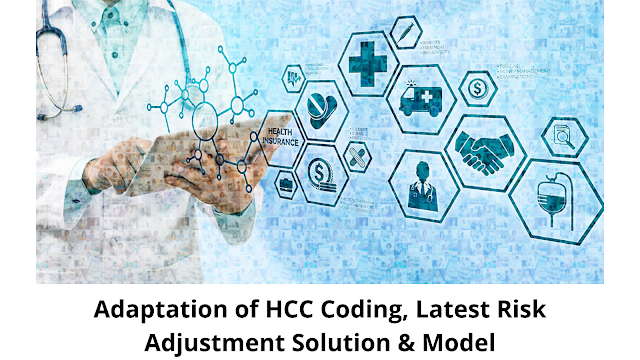Adaptation of HCC Coding, Latest Risk Adjustment Solution & Model
The Risk Adjustment Solution forecasts risk scores based on a patient’s
demographics and diagnoses. Because a healthy enrollee has a lower-than-average
risk adjustment factor score, the insurance premium is shifted from a healthy
individual to that enrollee with higher-than-average risk adjustment factor
scores.
What are Hierarchical Condition Categories (HCCs)?
Hierarchical Condition Categories (HCCs) are
groups of diagnostic codes associated with a specific clinical diagnosis. The risk
adjustment model has gained considerable attention in recent times since
Medicare Advantage Plans have begun to demand risk adjustment scores for
reimbursement.
As per risk adjustment factors and Affordable
Care Act reforms, the health insurers are committed to delivering high-quality,
low-cost health plans regardless of the patient's health condition. It is more
or less the same method by which patients are awarded a risk adjustment factor
score, which is partly based on HCCs.
What is Risk Adjustment Solution & HCC
Coding?
Risk adjustment is a technique for predicting
healthcare expenditures by equating a patient's health condition to a risk
score. The risk adjustment factor (RAF) scores are designed to forecast
enrollees' costs of healthcare.
HCC coding is a risk adjustment prediction model that insurance providers
utilize to give patients a risk adjustment factor score, in addition to
demographic characteristics. Insurance companies can use algorithms to estimate
costs based on an enrollees' risk adjustment factor score.
Importance of HCC & Risk Adjustment Solution
As HCCs take advantage of changes from Medicare
capitation payments to Medicare Advantage healthcare plans, caregivers who fail
to describe pertinent conditions of the patient precisely may reduce Medicare
reimbursements.
HCCs decide payment for providers, as per the Centers for Medicare and Medicaid Services' Quality Payment Program. Complex patient incentives under the Merit-based Incentive Payment System (MIPS) and risk adjustments cost component of MIPS are examples of this system.
Modern Coder’s Task
The primary objective of HCC is to provide
improved health management and correct reimbursements as per the Medicare
Advantage Plan. Medical coders must be aware of the latest rules and informed
about HCC to attain this aim. The competent coders will ensure that accurate
diagnostic codes are provided together with comprehensive clinical data.
HCC coding, when implemented correctly, simplifies the process, resulting in
clean claims and prompt payments.
Conclusion
The latest risk adjustment solution &
model has opened a new universe of opportunities for coders and healthcare
providers for quick reimbursements.
HCC coding is indeed an integral feature of the
healthcare revenue cycle. It must be precise, safe, and efficient to ensure
consistent revenue and compliance.


.png)
Comments
Post a Comment
Please do not enter any spam link in the comment box